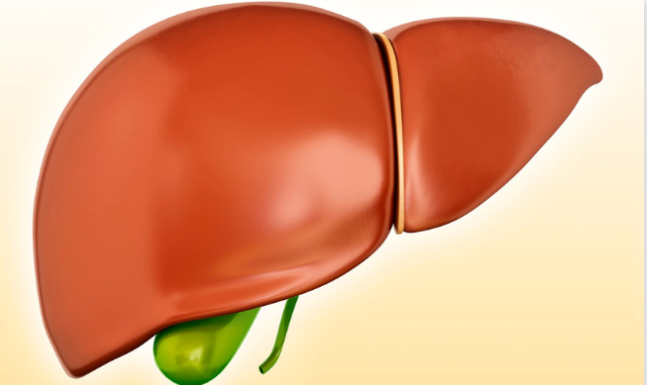How to Treat Liver Parenchymal Disease?
- March 18, 2024
- No Comments

What is Liver Parenchymal Disease?
Liver parenchymal disease refers to damage or dysfunction of the liver's functional tissue, known as the hepatic parenchyma. The hepatic parenchyma consists of hepatocytes, which are the main functional cells of the liver responsible for various metabolic processes, including detoxification, protein synthesis, and nutrient storage. When the liver parenchyma is affected by disease, it can lead to impaired liver function and potentially serious health complications.
Why is Liver Parenchymal Disease a Concern?
Liver parenchymal disease is a significant concern because the liver plays a crucial role in maintaining overall health and well-being. As the body's primary detoxification organ, the liver helps remove toxins and waste products from the bloodstream. Additionally, it is involved in metabolizing nutrients, producing bile for digestion, and regulating blood sugar levels. When the liver parenchyma is damaged, these essential functions are compromised, leading to a range of symptoms and complications, including jaundice, fatigue, abdominal pain, and liver failure.
How to Recognize Liver Parenchymal Disease?
Recognizing liver parenchymal disease requires a thorough evaluation by a healthcare professional. Common signs and symptoms of liver parenchymal disease may include, Jaundice (yellowing of the skin and eyes), Fatigue and weakness, Abdominal pain or discomfort, Nausea and vomiting, Loss of appetite, Swelling in the abdomen or legs (ascites), Easy bruising or bleeding, Changes in urine color (dark urine), Pale or clay-colored stools
Treatment Solutions for Liver Parenchymal Disease:
- Lifestyle Modifications: Making healthy lifestyle changes can help manage liver parenchymal disease and prevent further damage to the liver. This may include Following a balanced diet low in saturated fats, refined sugars, and sodium, Avoiding alcohol consumption or limiting intake to recommended amounts, Maintaining a healthy weight through regular exercise and portion control, Quitting smoking, as smoking can exacerbate liver damage and increase the risk of complications.
- Medications: Depending on the underlying cause of liver parenchymal disease, medications may be prescribed to manage symptoms, alleviate inflammation, or treat underlying conditions. Common medications used in the treatment of liver disease include, Antiviral medications for viral hepatitis, Immunosuppressants for autoimmune liver diseases, Ursodeoxycholic acid (UDCA) for cholestatic liver diseases, Diuretics for managing ascites and fluid retention.
- Nutritional Support: Proper nutrition is essential for supporting liver function and promoting healing. In some cases, nutritional supplements or specialized diets may be recommended to ensure adequate intake of essential nutrients. A registered dietitian can provide personalized nutrition counseling and guidance on dietary modifications.
- Management of Complications: Liver parenchymal disease can lead to various complications, such as portal hypertension, hepatic encephalopathy, and liver failure. Managing these complications may require additional interventions, including Medications to reduce portal pressure and prevent bleeding from varices, Dietary modifications to manage hepatic encephalopathy, Liver transplantation for end-stage liver disease
- Regular Monitoring and Follow-Up: Individuals with liver parenchymal disease require regular monitoring and follow-up care to assess liver function, monitor disease progression, and adjust treatment as needed. This may involve regular blood tests, imaging studies, and clinical evaluations by a healthcare provider.
Benefits of Treating Liver Parenchymal Disease:
- Improved Liver Function: Treatment of liver parenchymal disease can help improve liver function and slow down the progression of liver damage. By addressing underlying causes and managing symptoms, individuals can experience better liver health and overall well-being.
- Prevention of Complications: Managing liver parenchymal disease effectively can help prevent or delay the onset of complications such as portal hypertension, hepatic encephalopathy, and liver failure. Early detection and intervention are key to minimizing the risk of serious complications and improving long-term outcomes.
- Enhanced Quality of Life: By managing symptoms and optimizing liver function, individuals with liver parenchymal disease can experience an improved quality of life. Relief from symptoms such as fatigue, abdominal pain, and jaundice can significantly enhance daily functioning and overall well-being.
- Longer Life Expectancy: Effective treatment and management of liver parenchymal disease can prolong life expectancy and reduce the risk of mortality associated with advanced liver disease. With appropriate care and adherence to treatment recommendations, individuals can live longer, healthier lives despite having liver disease.
- Improved Prognosis: Timely diagnosis and intervention can lead to a better prognosis for individuals with liver parenchymal disease. By addressing underlying causes, managing symptoms, and preventing complications, healthcare providers can help optimize outcomes and improve the long-term prognosis for affected individuals.
Comments (0)